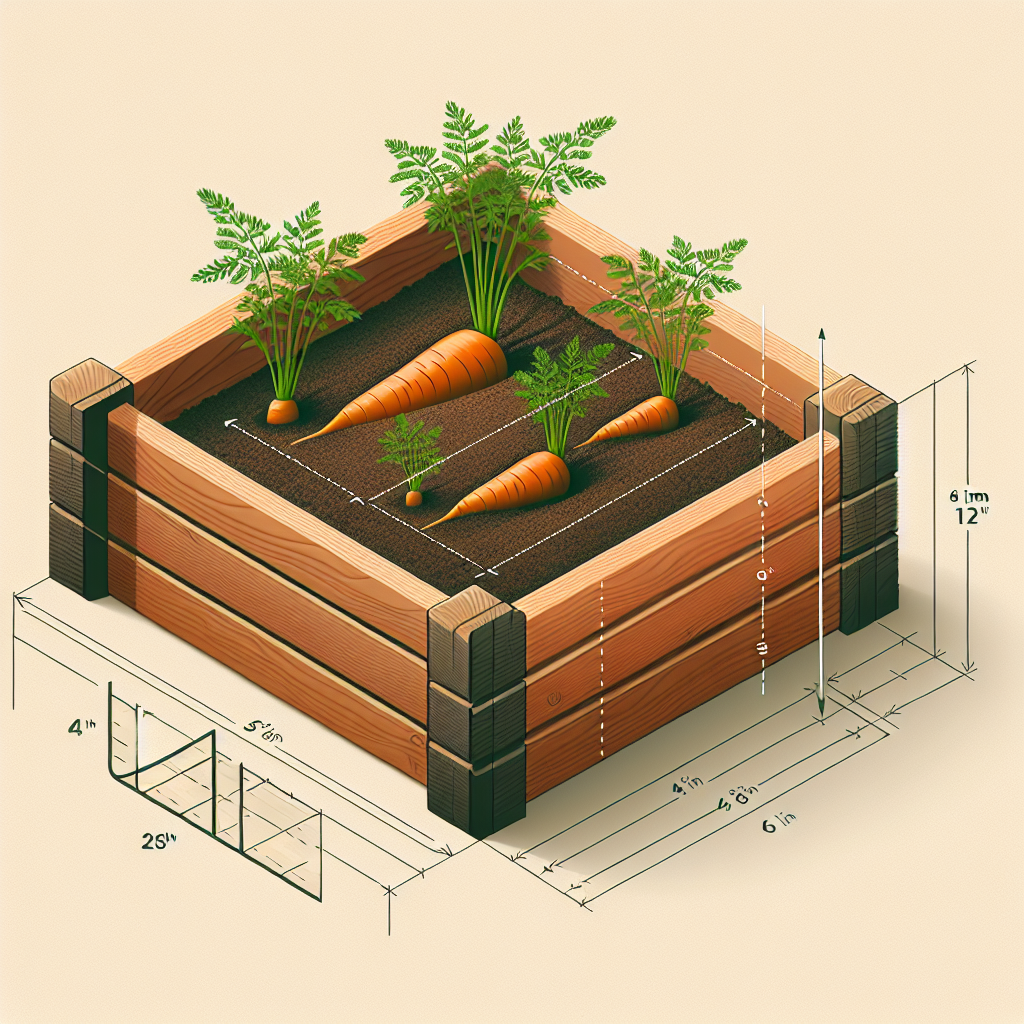
How deep raised bed for carrots
Introduction to Growing Carrots in Raised Beds
Growing carrots is a rewarding aspect of gardening, offering a vibrant splash of color and exceptional flavors to your meals. Karrots are versatile vegetables that can be grown in various conditions, but using raised beds can enhance their growth and yield. One question many gardeners have is, how deep raised bed for carrots is optimal for producing healthy and robust roots? In this article, we will delve into this topic and explore the benefits of raised beds for carrot cultivation.
The Importance of Bed Depth for Carrots
The depth of your raised bed is a crucial factor when growing carrots. Carrots are root vegetables, and their growth is affected by the available soil depth. If the soil is too shallow, carrots can become stunted or deformed, resulting in poor harvests.
Here are essential aspects of why the depth of your raised bed matters:
- Root Development: Carrots develop long taproots that require ample space to grow properly.
- Soil Moisture: A deeper bed can hold more moisture, which is essential for carrot growth.
- Nutrient Availability: Deeper soil means more room for nutrients to percolate and reach the carrot roots.
Recommended Depth for Raised Beds
Experts recommend a minimum of 12 to 18 inches in depth for raised beds intended for carrot cultivation. This depth allows ample room for root expansion, ensuring healthy crop production.
Let's explore the reasoning behind this recommendation:
- Carrots generally grow at least 6 to 8 inches below the soil surface.
- Having additional depth allows for better drainage and aeration.
- It helps protect the roots from temperature fluctuations.
Advantages of Using Raised Beds for Carrots
There are numerous benefits to growing carrots in raised beds, including:
- Improved Soil Quality: You can create an optimal soil mix tailored specifically for carrot growth.
- Easier Access: Raised beds are easier to tend to, reducing strain on your back and knees.
- Weed Control: Raised beds can reduce weed growth, allowing your carrots to thrive.
- Pest Management: Elevating the garden can help deter some pests and diseases associated with soil-borne issues.
Soil Composition for Carrots in Raised Beds
The soil in your raised bed should be well-draining and rich in nutrients. Here are key components to include in your soil mix:
- Topsoil: Provides the essential nutrients for plant growth.
- Compost: Enhances soil structure and provides vital nutrients.
- Sand: Improves drainage and prevents soil compaction, important for root development.
- Peat Moss: Retains moisture while promoting aeration.
Creating the Perfect Raised Bed for Carrots
To establish a successful raised bed for carrots, follow these steps:
Choosing the Right Location
“Choose a location that receives full sun for at least 6-8 hours a day to ensure vibrant carrot growth.”
Lighting plays a significant role in carrot production. Full sun will provide the necessary energy for crops to thrive.
Building Your Raised Bed
Constructing a raised bed is a straightforward process. Here is a simple method:
- Define the dimensions of your raised bed (for carrots, a size of 4 feet by 8 feet is common).
- Choose materials such as untreated lumber, bricks, or stones to form the walls.
- Set the bed in your chosen location and fill it with the recommended soil mix.
Planting Carrots
Timing is vital when planting carrots. Here’s how you can ensure a successful sowing:
- Planting Time: Start seeds 2-4 weeks before the last frost date in your area.
- Seed Spacing: Thinly sow seeds to allow each carrot enough room to grow (roughly 1-2 inches apart).
- Seed Depth: Plant seeds about ¼ to ½ inch deep to optimize germination.
Watering and Maintenance
Proper care and maintenance are essential for a successful carrot crop. Here are tips for watering and maintaining your raised bed:
Watering Practices
Carrots prefer consistently moist soil without becoming waterlogged. Here’s how to manage watering effectively:
- Frequency: Water regularly, especially during dry spells, aiming for 1 inch of water per week.
- Deep Watering: Encourage deep root growth by watering thoroughly, allowing the moisture to penetrate the soil.
Weed and Pest Management
Keeping your raised bed clear of weeds is crucial for carrot development. Regularly check for pests and employ organic pest management techniques such as:
- Hand-picking: Remove pests manually whenever possible.
- Companion Planting: Grow herbs or flowers that deter pests alongside your carrots.
- Mulching: Apply mulch to suppress weeds and retain soil moisture.
Harvesting Carrots
Knowing when to harvest your carrots will ensure the best flavor and texture. Here are signs that your carrots are ready:
- Size: Carrots are typically ready for harvest when they reach about 1 inch in diameter.
- Color: Look for uniform color that indicates they are ripe.
Harvest carrots by gently loosening the soil around the base and pulling them out, taking care to avoid breaking the taproot.
Conclusion
Understanding how deep raised bed for carrots is one of the many aspects that contribute to a successful carrot crop. By building a well-constructed raised bed that is at least 12 to 18 inches deep, utilizing quality soil, and following good gardening practices, you can enjoy a bountiful harvest of delicious carrots. Whether you're a novice or experienced gardener, raised bed gardening can significantly enhance your productivity and satisfaction in growing homegrown vegetables.
```By Guest, Published on October 11th, 2024